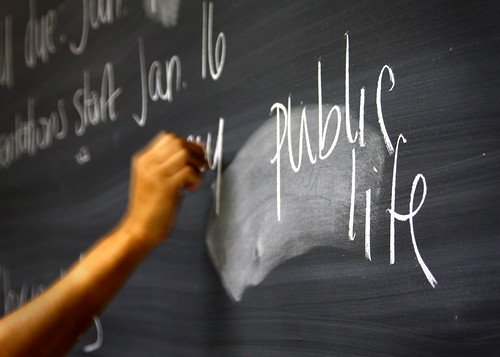After I slovenly put together that last post about secret societies, i found myself divvying up (with my stepdad) this week’s Australian Literary Review, which seemed to have rather a lot of articles relating to the business of being a citizen – politically engaged and discussing issues pertaining to the broader notion of the public sphere.
I thought it was kind of a nice pendulum swing from the interstitial space of being in a secret society: neither public nor private.
Firstly I was excited to see that Jock Given wrote about the notion of privacy, using the ALRC’s recent review of Australia’s Privacy Act, For Your Information, as a prompt to review three publications which address the notion of privacy and ‘the public sphere’ – specifically in the media/comms realm, but still relevant to this little bunny (who, in case you hadn’t picked it up, is interested in art that addresses the line between public and private spheres).
Given reviewed The Spy in the Coffee Machine by Kieron O’Hara and Nigel Shadbolt; Blown to Bits by Hal Abelson, Ken Ledeen and Harry Lewis and Privacy: A Manifesto by Wolfgang Sofsky (one which I own). He broke the reactions to contemporary issues of privacy within the books into three ‘camps’: the ‘get-on-with-its’, the ‘get-over-its’ and the ‘get-out-of-its’: those that accept the changing nature of privacy, those who advocate it and those who rebel against it.
Some of the gems from the articles include:
…public melieux where one would not ordinarily expect to indulge in hightly private or intimate behaviour… (as a definition of the public sphere, in relation to surveillance)
or
“…Privacy to them (authors of Blown to Bits) is not a right to be separated from society, but one that makes society work. People need room to experiment, to deviate from accepted social norms, because there are no universally and permanently satisfactory one. They also need to develop and rehearse independent thought before its public exposure…”
Then, after a great article by Robert Dessaix on the Archbishop of Canterbury’s book on Fyodor Dostoevsky (one of my literary lushes), I read what was left of an article by Mr Kathy Lette – Geoffrey Robertson, about suggested format for our bill of rights. An excerpt from his upcoming book, Statute of Liberty: How Australians Can Take Back Their Rights, it was surprisingly rousing for me. I had tears in my eyes reading some of the statements to which Australians would pledge (according to Robertson’s proposal).
Most of them were fantastic, in tone, intention and content. I only had two minor issues with them:
Article 9, The Right to a Fair Trial is obviously taken straight from current statutes and not edited, as it all says “he” this and “to him” that. All the other rights are gender-equal and I would like to think that at the end of the first decade in the 21millenium, Australian’s first bill of rights would be one that addresses the rights of all citizens – in content and language.
And then Item iii of Article 15, Right to Own Property, states that “there shall be no confiscation of private property by the state other than when it is in satisfaction of a judgment deb or if it is reasonably suspected to be the proceeds of crime”. Whilst technically not confiscated, there is no mention of the fact that land which is being repatriated to Indigenous communities will be done so according to the Native Title act. Technically this contravenes the idea of all ‘owning’ land. I would like to think that Australia’s first bill of rights would acknowledge this important process of our national identity.
In fact, between those two rather chunky articles, it felt like I had read the kinds of things that should be discussed in mass media publications: the business of being a citizen: the politics of public life, rather than the private lives of people who have a higher paid stylist than me.
Wouldn’t that be something!
